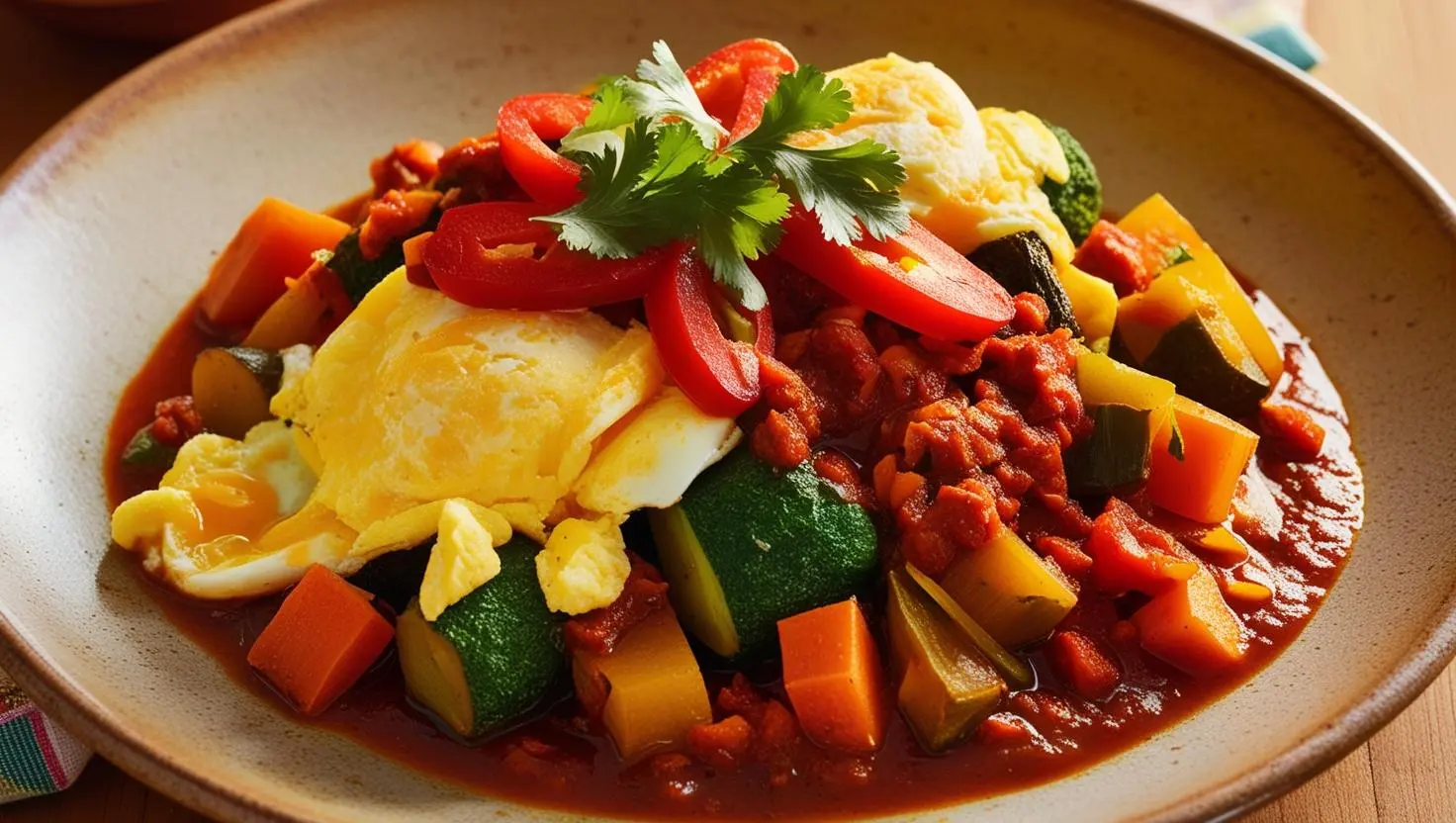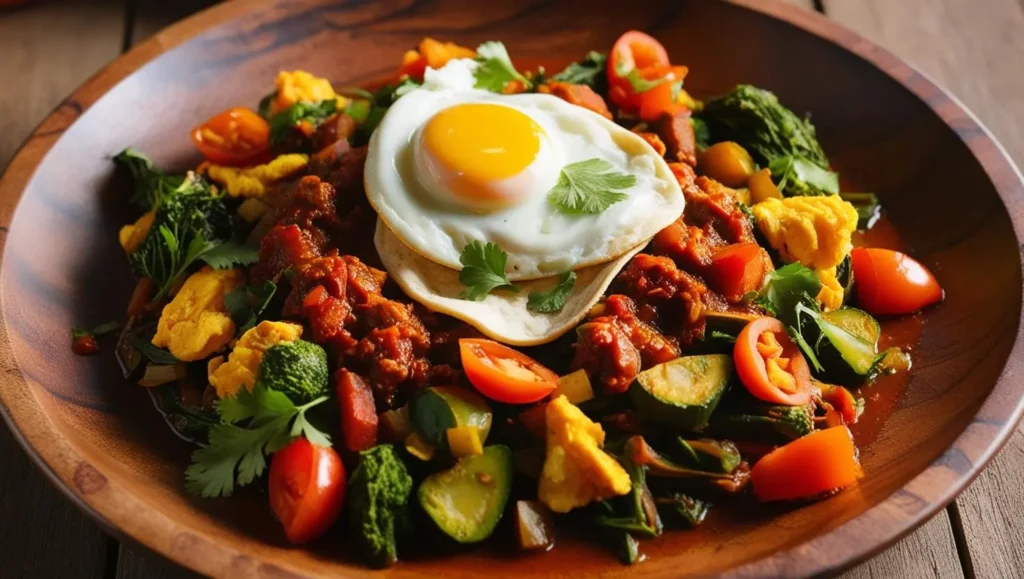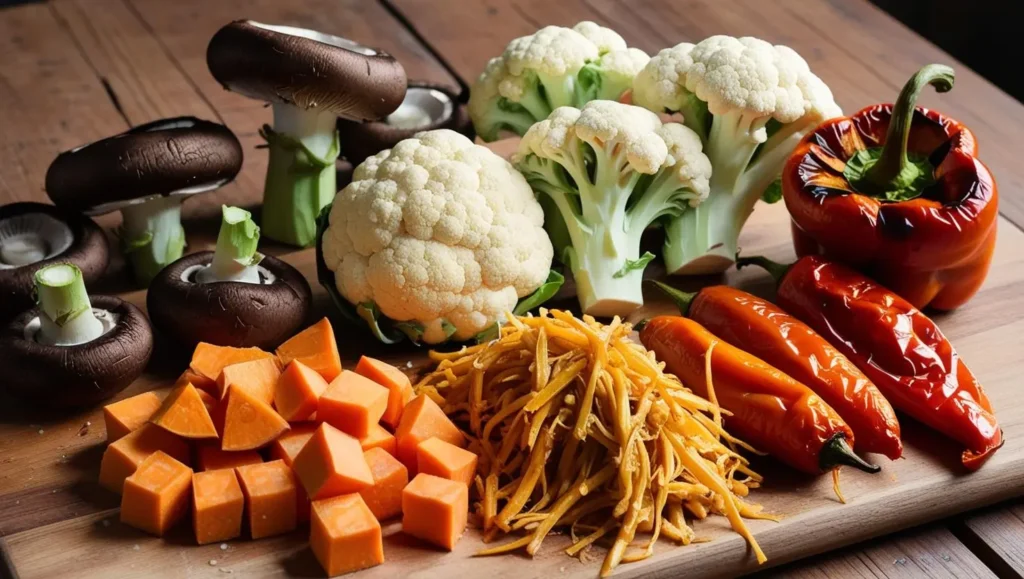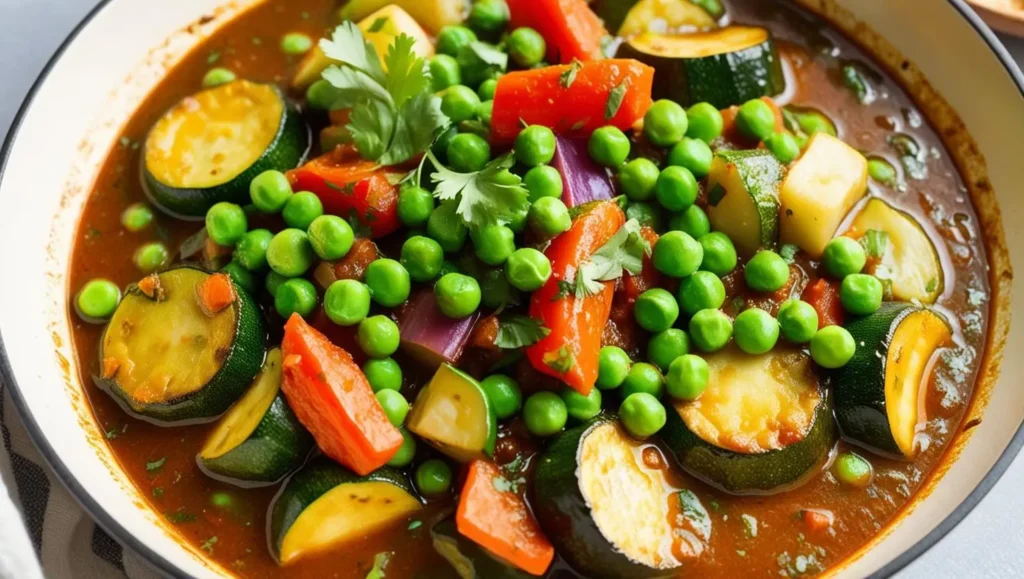
Table of Contents
Introduction
Tired of bland, uninspiring vegetarian dishes that leave you craving something more satisfying? You’re not alone. Many home cooks struggle to create vegetarian Mexican food that captures the vibrant flavors and textures of restaurant favorites. But that’s about to change.
This collection of vegetarian Mexican food recipes will transform your home cooking with authentic flavors that rival your favorite restaurant. Each dish uses simple techniques that elevate ordinary ingredients into extraordinary meals.
As a culinary instructor specializing in plant-based Mexican cuisine for over 12 years, I’ve refined these recipes to ensure they deliver maximum flavor without complex techniques. These dishes have converted even the most dedicated meat-eaters in my cooking classes.
In this guide, you’ll discover expert vegetable selection tips, time-saving preparation hacks, foolproof cooking methods, and answers to common questions about vegetarian Mexican food. Let’s get cooking!
Why These Vegetarian Recipes Work
- Uses affordable, easy-to-find vegetables and pantry staples
- Requires just 30 minutes of active preparation for most dishes
- Features make-ahead components perfect for busy weeknights
- Delivers authentic Mexican flavors without animal products
- Creates satisfying meals that please both vegetarians and meat-eaters
- Offers flexible variations to accommodate different dietary needs

Choosing the Right Vegetables
Best Vegetables for Mexican Dishes
The foundation of great vegetarian Mexican food starts with selecting the right produce. Unlike meat-based dishes that rely on animal protein for satisfaction, plant-based Mexican cuisine depends on thoughtful vegetable selection:
- Mushrooms: Portobello and oyster varieties provide meaty texture for tacos and fajitas
- Cauliflower: Absorbs spices beautifully for “carnitas” and “barbacoa” alternatives
- Sweet Potatoes: Adds natural sweetness and hearty texture to enchiladas and burritos
- Jackfruit: Creates a convincing pulled “meat” texture when properly prepared
- Poblano Peppers: Offers mild heat and substantial flesh for stuffing and roasting
Buying Tips
When shopping for vegetables for your vegetarian Mexican food:
- Look for different colors to maximize nutritional variety and visual appeal
- Choose firm vegetables without soft spots or blemishes
- Select produce that feels heavy for its size (indicates moisture content)
- Buy seasonal vegetables whenever possible for best flavor and value
- Consider local farmers’ markets for fresher, more flavorful options
Ingredients & Prep
Vegetarian Prep Essentials
Proper preparation techniques are crucial for vegetarian Mexican food that satisfies:
- Mushrooms: Clean with a damp cloth (don’t soak); remove stems for portobello caps
- Cauliflower: Cut into uniform florets for even cooking; save stems for soups
- Sweet Potatoes: Dice into 1/2-inch cubes for faster cooking and even texture
- Jackfruit: Drain well and remove seed pods and tough pieces before shredding
- Peppers: Roast whole until skin blisters for easy peeling and enhanced flavor

Marinades & Seasonings
These flavor-building components transform simple vegetables into restaurant-quality vegetarian Mexican food:
- Classic Adobo Marinade: 3 dried guajillo chilies (rehydrated), 4 cloves garlic, 1 tsp oregano, 1/2 tsp cumin, 2 tbsp apple cider vinegar, 1/4 cup olive oil. Blend until smooth.
- Cilantro-Lime Marinade: 1 bunch cilantro, juice of 3 limes, 4 cloves garlic, 1 jalapeño, 1/4 cup olive oil, 1 tsp salt. Blend and marinate vegetables for at least 2 hours.
- Smoky Chipotle Rub: 2 tbsp chipotle powder, 1 tbsp smoked paprika, 1 tbsp brown sugar, 1 tsp garlic powder, 1 tsp salt. Apply to vegetables 30 minutes before cooking.
Pantry Staples
Keep these essentials on hand for authentic vegetarian Mexican food anytime:
- Oils: Avocado oil (high heat cooking), extra virgin olive oil (marinades)
- Spices: Cumin, Mexican oregano, chile powders, cinnamon
- Acids: Lime juice, apple cider vinegar (for brightening flavors)
- Beans: Black beans, pinto beans, refried beans (protein sources)
- Grains: Mexican rice, quinoa, corn tortillas (authentic bases)
Step-by-Step Cooking Instructions
1. Cauliflower “Carnitas” Tacos
Pre-Cooking Prep
- Break cauliflower into small florets (about 1 head)
- Toss with 3 tbsp olive oil, 2 tsp cumin, 1 tsp oregano, and 1 tsp salt
- Allow to marinate for 15 minutes at room temperature
Cooking Method
- Preheat oven to 425°F
- Spread cauliflower on baking sheet without overcrowding
- Roast for 20-25 minutes, flipping halfway through
- Broil for final 3-5 minutes until edges are crispy and charred
Doneness Check
Cauliflower should be fork-tender with crispy, browned edges
Assembly
- Warm corn tortillas in a dry skillet
- Fill with cauliflower “carnitas”
- Top with diced white onion, cilantro, and lime wedges
2. Mushroom “Carne Asada” Fajitas
Pre-Cooking Prep
- Slice 1 lb portobello mushrooms into 1/4-inch strips
- Slice 1 red bell pepper and 1 yellow onion into strips
- Marinate mushrooms in classic adobo marinade for at least 30 minutes
Cooking Method
- Heat cast iron skillet over high heat until smoking
- Add 1 tbsp avocado oil
- Cook mushrooms in batches (don’t overcrowd) for 3-4 minutes per side
- Add peppers and onions, cook until slightly softened but still crisp
Doneness Check
Mushrooms should be browned with caramelized edges; vegetables should be tender-crisp
Assembly
- Serve sizzling hot with warm flour tortillas
- Accompany with guacamole, pico de gallo, and lime wedges

3. Sweet Potato and Black Bean Enchiladas
Pre-Cooking Prep
- Peel and dice 2 large sweet potatoes into 1/2-inch cubes
- Drain and rinse 1 can black beans
- Chop 1 small onion and mince 2 cloves garlic
Cooking Method
- Sauté onion and garlic in olive oil until translucent
- Add sweet potatoes, cook for 5 minutes
- Add black beans, 1 tsp cumin, 1/2 tsp cinnamon, salt and pepper
- Cook until sweet potatoes are tender, about 10 minutes
- Pour 1/2 cup enchilada sauce in baking dish
- Fill corn tortillas with mixture, roll and place seam-side down
- Cover with remaining enchilada sauce and shredded cheese (optional)
- Bake at 375°F for 20 minutes
Doneness Check
Enchiladas should be bubbling around edges with melted cheese
Serving
- Let rest for 5 minutes before serving
- Garnish with Mexican crema, cilantro, and avocado slices
4. Jackfruit “Tinga” Tostadas
Pre-Cooking Prep
- Drain and rinse 2 cans young jackfruit
- Remove seed pods and tough pieces
- Shred with two forks to create meat-like texture
Cooking Method
- Sauté 1 diced onion until translucent
- Add 3 minced garlic cloves, cook for 30 seconds
- Add jackfruit, 2 tbsp tomato paste, 1 tsp oregano, 1/2 tsp cumin
- Pour in 1 cup vegetable broth and 1/4 cup chipotle sauce
- Simmer uncovered for 25-30 minutes, stirring occasionally
- Use fork to further shred jackfruit as it cooks
Doneness Check
Liquid should be reduced to thick sauce; jackfruit should be tender and fully shredded
Assembly
- Crisp tostada shells in oven at 350°F for 5 minutes
- Spread layer of refried beans on shell
- Top with jackfruit tinga
- Garnish with shredded lettuce, diced tomato, and crumbled queso fresco
5. Stuffed Poblano Chiles Rellenos
Pre-Cooking Prep
- Roast 4 large poblano peppers directly over flame or under broiler until skin blisters
- Place in paper bag for 10 minutes to steam
- Gently peel skin, make small slit to remove seeds, keeping stem intact
Cooking Method
- Prepare filling: sauté diced zucchini, corn, and onions with spices
- Mix with cooked quinoa and cheese (or plant-based alternative)
- Carefully stuff peppers with filling
- For traditional version: dip in egg batter and fry until golden
- For lighter version: bake at 375°F for 20 minutes
Doneness Check
Peppers should be tender with filling heated through; batter should be golden if fried
Serving
- Place on pool of tomato sauce or salsa roja
- Garnish with Mexican crema and cilantro
Pro Tips for Perfect Vegetarian Mexican Food
Avoiding Common Mistakes
- Don’t overcook vegetables: They should retain texture and not become mushy
- Balance moisture levels: Remove excess water from vegetables before roasting to avoid steaming
- Layer flavors: Build depth with charring, marinades, and finishing seasonings
- Use authentic ingredients: Look for Mexican oregano, true cinnamon, and proper chiles
- Don’t rush the process: Allow time for marinades to penetrate and flavors to develop
Tool Recommendations
- Comal or cast-iron skillet: Essential for charring vegetables and warming tortillas
- Molcajete: Traditional stone mortar and pestle for authentic salsas and guacamole
- Good quality chef’s knife: For efficient vegetable preparation
- Citrus juicer: For extracting maximum juice from limes and lemons
- Blender: For smooth sauces and marinades
Storage & Reheating
- Store components separately when possible (filling, sauce, tortillas)
- Refrigerate prepared dishes in airtight containers for up to 3 days
- Freeze enchiladas before baking for up to 2 months
- Reheat in oven rather than microwave to maintain texture
- Add fresh garnishes after reheating to brighten flavors
Flavor Variations
Spicy Twists
- Habanero Heat: Add finely diced habanero to salsas for serious spice lovers
- Chipotle Smokiness: Incorporate more chipotle in adobo for deep, smoky heat
- Chile Oil Drizzle: Finish dishes with homemade chile oil for customizable heat
Dietary Adaptations
- Vegan Options: Substitute cashew cream for dairy, nutritional yeast for cheese flavor
- Gluten-Free: Use corn tortillas and ensure all seasonings are certified gluten-free
- Low-Carb: Serve fillings in lettuce cups instead of tortillas, use cauliflower rice
Global Fusion Flavors
- Mediterranean-Mexican: Add olives and capers to tomato-based sauces
- Asian-Inspired: Incorporate ginger and soy into marinades for fusion tacos
- Middle Eastern Touch: Use tahini and sumac in vegetarian taco fillings
Serving Suggestions
Complete your vegetarian Mexican food experience with these perfect pairings:
- Classic Rice and Beans: Mexican red rice and refried beans make any main dish a feast
- Fresh Salsas: Offer variety with pico de gallo, salsa verde, and mango salsa
- Guacamole Bar: Set out classic guacamole with optional add-ins like pomegranate seeds or roasted garlic
- Pickled Vegetables: Quick-pickled red onions, jalapeños, and carrots add brightness
- Refreshing Beverages: Serve with agua fresca, horchata, or lime-spiked sparkling water
FAQs
Can I prepare these vegetarian Mexican food recipes in advance?
Yes! Many components can be prepared 1-2 days ahead. Marinades actually benefit from extra time, and fillings often taste better after flavors meld overnight. Store components separately and assemble just before serving for best results.
How do I make these recipes vegan?
Most recipes are naturally vegan or easily adapted. Replace cheese with plant-based alternatives or nutritional yeast, use cashew cream instead of Mexican crema, and check that your tortillas don’t contain lard (most don’t these days).
My vegetables turned out soggy instead of crisp. What went wrong?
Three common culprits: overcrowding the pan (vegetables steam rather than roast), not drying vegetables thoroughly before cooking, or cooking at too low a temperature. Make sure your oven is fully preheated and give vegetables plenty of space.
Can I use frozen vegetables in these recipes?
Fresh vegetables provide the best texture for vegetarian Mexican food, but in a pinch, frozen can work for some applications. Thaw completely and pat dry before using. Frozen corn and peas work particularly well; avoid frozen peppers or mushrooms.
Are these recipes authentic Mexican cuisine?
These recipes honor traditional Mexican techniques and flavor profiles while adapting them for vegetarian diets. Many traditional Mexican dishes are naturally vegetarian or have regional vegetarian variations, particularly from central and southern Mexico.
Conclusion
Creating restaurant-quality vegetarian Mexican food at home is absolutely achievable with the right techniques and ingredients. These five signature recipes give you a solid foundation to explore the incredible diversity of Mexican cuisine without meat.
Fire up your kitchen and try one of these dishes tonight! The complex flavors and satisfying textures might just convince you that vegetarian Mexican food deserves a permanent place in your cooking rotation.
Join over 5,000 home cooks who have transformed their weeknight dinners with these recipes. Your friends and family won’t believe these dishes came from your kitchen—not their favorite Mexican restaurant.
Looking to expand your Mexican cooking repertoire? Try our [Ultimate Guide to Homemade Salsas] or [Perfect Mexican Rice Every Time] next!
Tasted it? Let us know below!
There are no reviews yet. Be the first one to write one.
